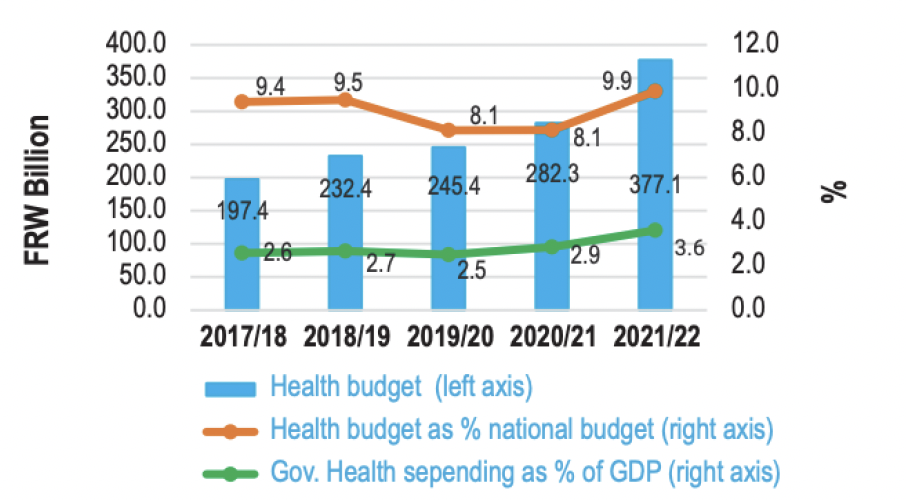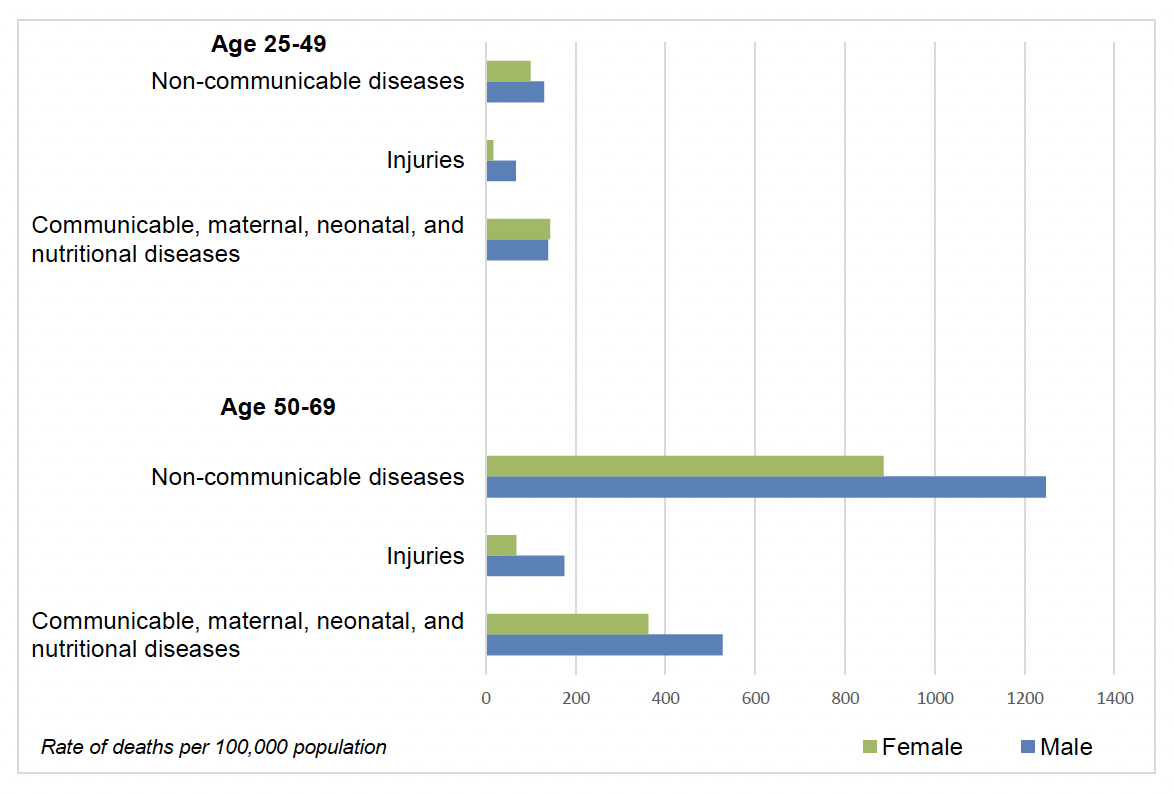International Development Fund: non-communicable disease programme
This report responds to a commission by the Scottish Government to design a new international development health programme providing support to the governments of Malawi, Rwanda and Zambia with a focus on non-communicable diseases (NCDs).
Appendix 3: Country snapshots – Rwanda
Economic-political situation
Rwanda has made significant progress since the genocide of 1994. The current government, under the leadership of Paul Kagame, was re-elected in 2018 following an amendment of the constitution to allow a third term. Poverty has declined from 77% in 2001 to 55% in 2017. Socioeconomic and geographic inequalities are high and people with disabilities are significantly over-represented in the poorest quintiles. The economy continues to grow with an average growth of 7.2% in 2019, and an increase in per capita gross domestic product (GDP) of 5%.[110]
Table 15: Population in Rwanda (2020, 2035, and 2050)[111]
Population (million)
2020: 13.1
2035: 18.0
2050: 23.0
Health funding
Rwanda has increased its health budget by 33.6% in the last year, with the health budget share increasing to 9.2% in 2022. In 2021/22, domestic resources allocated to the health sector account for 43.2 per cent of the health sector budget, down from 51.4 per cent in 2020/21.[112]
Out of pocket expenses
Two major insurers (CBHI and RSSB) cover around 90% of the population. Out of pocket payments remain low in Rwanda accounting for around 8% of total health spend in 2014/2015.[113]
| 2022 | |
|---|---|
| Rural population | 82.4% |
| Birth rate | 3.93 |
| Population living under national poverty line | 38.3% |
| Population living under international poverty line | 56.3% |
| GDP per capita | $834 |
| <5 mortality per 1,000 live births | 40.5 |
| MMR[115] per 100,000 live births | 248 |
| Life expectancy | 69 |

Source: UNICEF – Health Budget Brief: Investing in Children’s Health in Rwanda 2021/22. Reproduced under a CC-BY license.
| Risk factor | Male | Female |
|---|---|---|
| % smokers | 19.2 | 7.1 |
| % binged alcohol in last week | 30.0 | 17.0 |
| % overweight | 17.1 | |
| % obese | 2.8 | |

Contact
Email: socialresearch@gov.scot
There is a problem
Thanks for your feedback